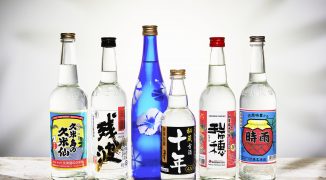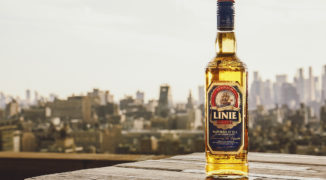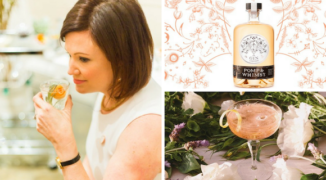The syrupy sweet chocolate liqueur we know as creme de cacao has a history just as rich and murky as the spirit itself. With no definitive origins, this chocolate liqueur has existed in many forms for centuries.
Cacao beans were first brought to Europe in the 1600s from Mexico and South America. French monks were the first to use the beans to brew alcohol, at least according to documented history. It was during this time that European monasteries were making tonics and wormwood wines for medicinal purposes. What we know today as creme de cacao was perhaps one of the liqueurs to come from these early experimentations.
Thanks to the bar culture of the ’80s and ’90s, most people associate creme de cacao with chocolate martinis and saccharine dessert cocktails like the Brandy Alexander. Hidden away on back bars everywhere, this delicious liqueur has myriad uses. Perhaps this is why craft bartenders are reinventing creme de cacao into an avant-garde cocktail ingredient reminiscent of its role in Prohibition-era cocktail making.
One of the original creme de cacao cocktails is the 20th Century, named after the railway by the same name. Essentially a play on a Corpse Reviver #2, the 20th Century blends gin, Lillet, creme de cacao and lemon juice for a chocolate-citrus punch that isn’t at all overpowering. Several craft bartenders have added their own spin on the classic, spawning both the 19th Century and the 21st Century as twists on the original.
The 19th Century comes from Pegu Club’s Brian Miller, who switches the gin for bourbon and substitutes white creme de cacao for the dark, bitter variety. The result is a well-balanced drink showcasing the caramel and vanilla of the bourbon with a hint of cacao flavor. Jim Meehan, also from Pegu Club, is responsible for the 21st Century, using tequila as the base spirit with creme de cacao, lemon juice and Pernod. One of his only drinks to make it on the menu, the 21st Century has now become a classic itself.
Creme de cacao comes in several forms depending on how it’s made. Philip Duff, bartender, consultant and Tales’ own Director of Education, explains that creme de cacao is made in one of two ways — percolated or distilled. “Percolated, just like making coffee, is where you have a filter and you fill it up with cacao beans, and instead of dripping water through it, you drip alcohol.” This variety is dark in color and full of rich, bitter cocoa flavor.
Distilled creme de cacao, on the other hand, is made by distilling the cacao itself and then macerating the distillate in more cacao and oftentimes vanilla beans for aroma. The distilled variety is also known as white creme de cacao for its clear coloring and lighter milk chocolate flavor. Duff debunks the common misconception that creme de cacao contains dairy, though. “‘Creme de’ doesn’t mean it contains cream at all. What it means, by EU legislation, is that it must have at least 250 grams of sugar per liter.”
Tempus Fugit’s creme de cacao uses the distillation method, resulting in a naturally caramel colored liqueur with rich aromas of vanilla and the taste of smooth chocolate. Sourcing the cacao from Venezuela and the vanilla beans from Mexico, the liqueur receives no added coloring, making it a favorite among craft bartenders today.
Jamie Boudreau of Canon in Seattle has used the liqueur in everything from his standout cocktail Chocolate Salty Bols to the Green Glacier, which combines Cognac, Green Chartreuse and creme de cacao with bitters and orange zest for an herbaceous, rich drink that plays on the classic pairing of chocolate and orange.
Christy Pope of Cuffs and Buttons created the Hocus Pocus in 2011 for the Ladies of Mixology Seminar. Blending tequila with ancho chili infused sherry, Ramazotti, Averna, coriander tincture and creme de cacao, Pope was one of the earliest craft bartenders to tap into the versatility of creme de cacao. Choosing it for its similarity to the chocolate element in mole, Pope’s Hocus Pocus is a complex and delicious cocktail that packs a spicy punch.
No longer overlooked for its overbearing sweetness, creme de cacao is ideal for experimentation and creativity. Whether mixing it with mezcal, bourbon, gin or vodka, this liqueur is a versatile cocktail ingredient quickly earning a new reputation of sophistication thanks to the craft bartenders bringing it off the back bar and into the limelight.
Get a taste for using both varieties of Marie Brizard’s creme de cacao in cocktails with these recipes:
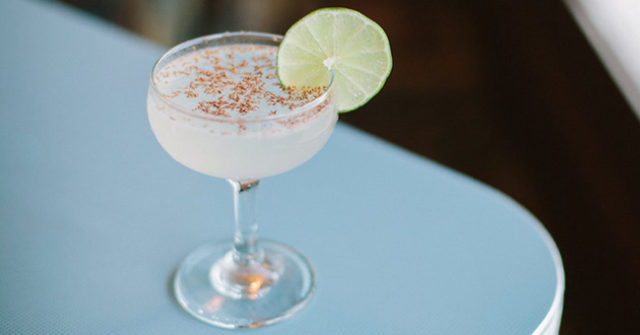 The Hornswoggler Daiquiri adds Marie Brizard Creme de Cacao White and a rise of Chartreuse to the timeless daiquiri formula. Ryan Iriarte, bar manager of High Hat Cafe, adds white creme de cacao, shaved chocolate and a Chartreuse rinse to the traditional daiquiri formula.
The Hornswoggler Daiquiri adds Marie Brizard Creme de Cacao White and a rise of Chartreuse to the timeless daiquiri formula. Ryan Iriarte, bar manager of High Hat Cafe, adds white creme de cacao, shaved chocolate and a Chartreuse rinse to the traditional daiquiri formula.
- 1 1/2 oz Cruzan Aged Rum
- 3/4 oz Marie Brizard White Creme de Cacao
- 3/4 oz lime juice
- Green Chartreuse rinse
In a shaker, combine rum, creme de cacao, and lime juice. Shake with ice. Double strain into a Chartreuse-rinsed coupe glass. Shave chocolate on top; add lime wheel perched on edge of the glass.
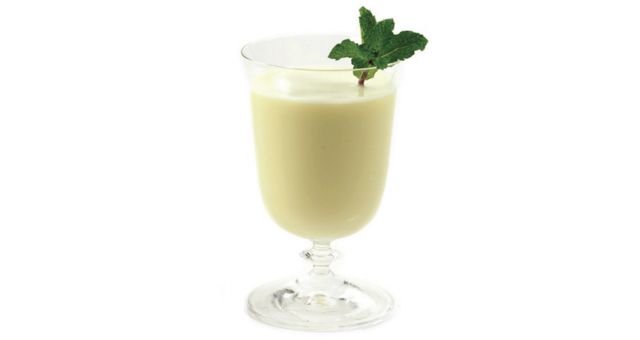 Grasshoppers are a classic. Throw a little spice into a time-tested dessert drink recipe with the Marie Grasshopper.
Grasshoppers are a classic. Throw a little spice into a time-tested dessert drink recipe with the Marie Grasshopper.
- 1 1/2 oz Green Chartreuse
- 3/4 oz Marie Brizard Creme de Cacao White
- 1/4 oz Ancho Reyes Liqueur
- 1 oz fresh cream
- 1 sprig fresh mint
Combine all ingredients into a shaker filled with ice. Shake vigorously and double strain into a cocktail glass. Garnish with a sprig of fresh mint.
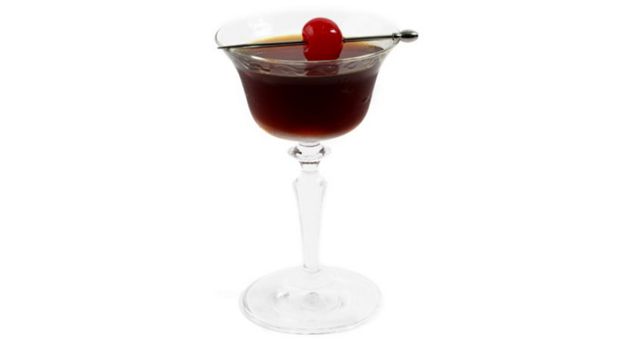
Can’t improve on a classic? We beg to differ. Marie Brizard’s Brown Cacao Liqueur gives a sweet twist to an old staple in the Chocolate Manhattan.
- 2 oz Cedar Ridge Rye Whiskey
- 3/4 oz Marie Brizard Brown Cacao Liqueur
- 1 dash Aztec Chocolate Bitters
- 1 cherry
Combine all ingredients into a cocktail shaker filled with ice cubes. Stir to mix and strain into a coupe glass. Garnish with a cured cherry.


